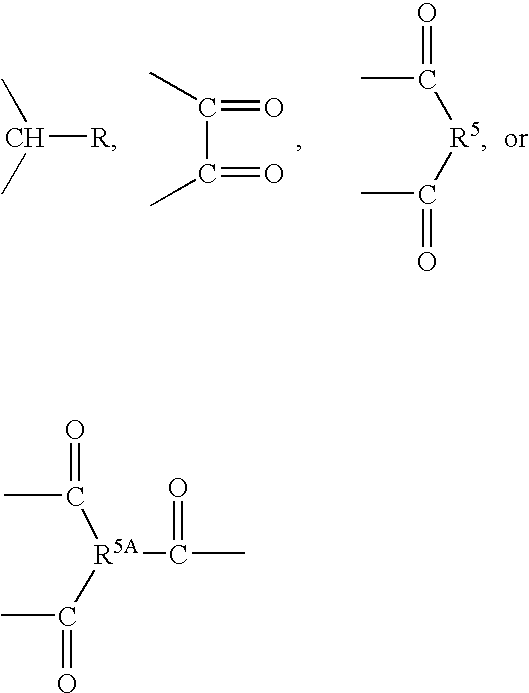Reactive diluents in coating formulation
a technology of reactive diluents and coating formulations, which is applied in the direction of synthetic resin layered products, organic chemistry, coatings, etc., can solve the problems of inability to achieve the desired
- Summary
- Abstract
- Description
- Claims
- Application Information
AI Technical Summary
Problems solved by technology
Method used
Image
Examples
examples
[0098] All manipulations—unless otherwise specified—were carried out under a nitrogen atmosphere. All the allylic alcohols and allylic ethers derivatives were distilled before use in the preparations of the ether esters. The octadienol was obtained from Fluka Chemicals. The dimethyl maleate, diethyl maleate and trimethyl 1,2,4-benzene tricarboxylate used were commercial products supplied by Aldrich Chemical Co.
Preparation of the Ether Alcohols
[0099] The mixed isomeric compounds, 1-(2,7-octadienoxy)propan-2-ol and 2-(2,7-octadienoxy)propan-1-ol were prepared by the reaction of 2,7-octadienol with propylene oxide and purified by distillation (see examples below). No attempt was made to separate the two isomers of which the secondary alcohol was the major component e.g.
[0100] The ethoxylation of the allylic alcohol such as 2,7-octadienol in the presence of a base catalyst such as potassium hydroxide may be carried out in an autoclave which is previously purged with nitrogen, pressu...
PUM
| Property | Measurement | Unit |
|---|---|---|
| viscosity | aaaaa | aaaaa |
| temperature | aaaaa | aaaaa |
| temperature | aaaaa | aaaaa |
Abstract
Description
Claims
Application Information
 Login to View More
Login to View More - R&D
- Intellectual Property
- Life Sciences
- Materials
- Tech Scout
- Unparalleled Data Quality
- Higher Quality Content
- 60% Fewer Hallucinations
Browse by: Latest US Patents, China's latest patents, Technical Efficacy Thesaurus, Application Domain, Technology Topic, Popular Technical Reports.
© 2025 PatSnap. All rights reserved.Legal|Privacy policy|Modern Slavery Act Transparency Statement|Sitemap|About US| Contact US: help@patsnap.com



